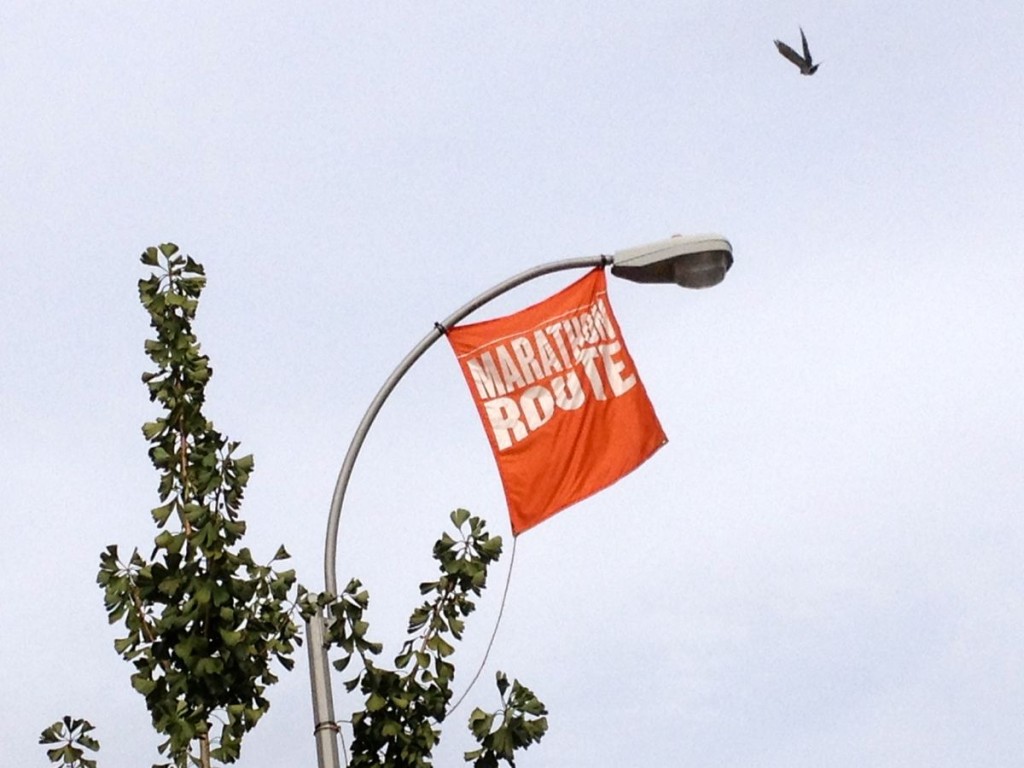The Downside of Social Media
Posted on . Today is November 4, 2012. It has been five days since Sandy swept through New York City. Electricity is back in Manhattan, although it will be a few more days before ConEd fixes every building. The subway system has made a remarkable recovery. The parks are open. The streets are cleared of trash. From my apartment on 63rd street I can see First Avenue where bright orange “Marathon Route” flags are flying. Normally the sidewalks would be packed ten deep, with cowbells clanging as runners pour over the 59th Street Bridge and into Manhattan. However it is quiet this year. The marathon was cancelled.
Today is November 4, 2012. It has been five days since Sandy swept through New York City. Electricity is back in Manhattan, although it will be a few more days before ConEd fixes every building. The subway system has made a remarkable recovery. The parks are open. The streets are cleared of trash. From my apartment on 63rd street I can see First Avenue where bright orange “Marathon Route” flags are flying. Normally the sidewalks would be packed ten deep, with cowbells clanging as runners pour over the 59th Street Bridge and into Manhattan. However it is quiet this year. The marathon was cancelled.
Opposition to the marathon began in earnest on Friday morning. The New York Post ran a story showing two generators in Central Park, in stark contrast to people who still had no power in the city. Petitions to cancel the marathon were quickly circulated on Facebook. Entreaties were made to Mayor Bloomberg over Twitter to cancel the event. Mary Wittenberg, the President of the NY Road Runners, received death threats. The marathon had become a lightening rod of criticism. By early afternoon, news broke that the marathon had been cancelled for the first time in over 40 years. Social media erupted as people congratulated themselves on the victory. It was another moment where voices in unison changed the will of politicians and planners.
Last night I received the following email from New York Road Runners, the non-profit organization that plans the marathon:
“It is with heavy hearts that we share the news that the 2012 ING New York City Marathon has been canceled… The growing media coverage antagonistic to the marathon and its participants created conditions that raised concern for the safety of both those working to produce the event and its participants. While holding the race would not have required diverting resources from the recovery effort, it became clear that the apparent widespread perception to the contrary had become the source of controversy and division.”
The New York Times wrote a story yesterday that outlined the immense cost of cancelling the event: $340MM in lost retail revenue and $17.3MM in lost tax revenue. That means fewer jobs next year for NYC firefighters, police officers, and teachers.
In the end, the marathon hurts no one, and it had the potential to help many people. I went to Central Park today and saw runners from all over the world wandering the race course. NY Marathoners had collectively raised millions for charity. On their shirts were motivating words like “Running for my dad” and “Running to cure breast cancer”. It is a reminder that people run marathons for a variety of reasons.
The NY Marathon is just one example of how powerful Facebook and Twitter have become over the past few years. Its hard to convey much in 140 characters, but its easy to complain about long lines, power outages, or bad service. And the extent to which ideas travel on Facebook has nothing to do with their veracity; it has only to do with how they harmonize with large groups. This phenomenon has a definition: Groupthink.
If used correctly social media has the potential to do immense good. However, it also has the potential to cause harm. Like many people, I rely on social media for access to news and information. The marathon was a reminder that I have to be mindful of this source because it is an imperfect medium.

Ian Sigalow
http://sigalow.comIan is a co-founder and partner at Greycroft Partners in New York City. He has been a venture capitalist since 2001.
AUTHOR RunningZuschi
Posted on 3:24 am November 5, 2012.
Thanks for your post…! I agree absolutly with you… People still have to learn how to handle it in the right way and furthermore, learn personal responibility – in any ways! It’s quite easy to scream something out – without reflection and knowing about the background.
AUTHOR idsigs
Posted on 10:20 am November 5, 2012.
One of the reasons I wrote this post is that I did some research on this topic in college (pre-social media), and looked at the differences between online petitions and written petitions as part of my econ work. I found that you get far more participation in online petitions, but if you survey the online respondents 12 months later they are less than half as likely to remember filling out the petition. The implication is that it requires much less conviction to check a box online than it does sign your name to a physical document. People also engage in different behavior when other people are watching than they do in the privacy of their homes, but that is another topic.The second factor is that people are much more likely to respond in the affirmative if a petition is sent to them by someone they trust. This is easy to do when sharing via social media. While the Internet is very empowering we have the wary of the effects of peer pressure and groupthink. This does have real ramifications for our Democracy.
AUTHOR jjlevin
Posted on 11:58 am November 15, 2012.
@idsigs Great post. Online (more anonymous) petitioning would then likely result in less groupthink pressure and therefore reflect an individual’s voice better in the democracy.